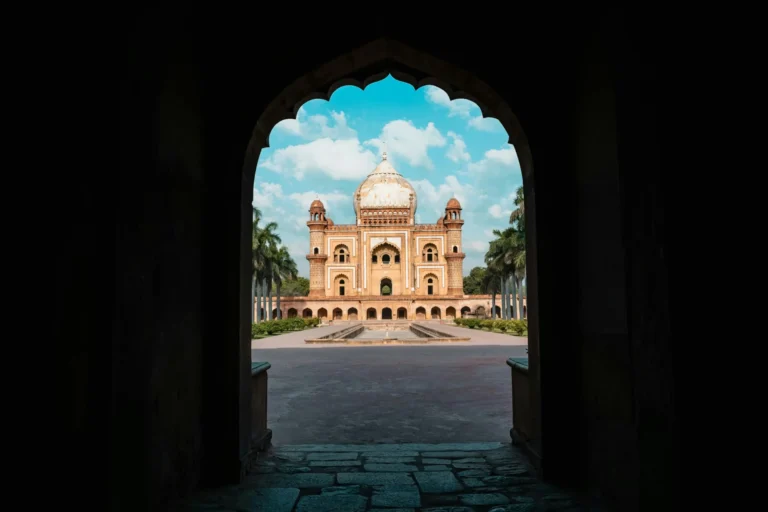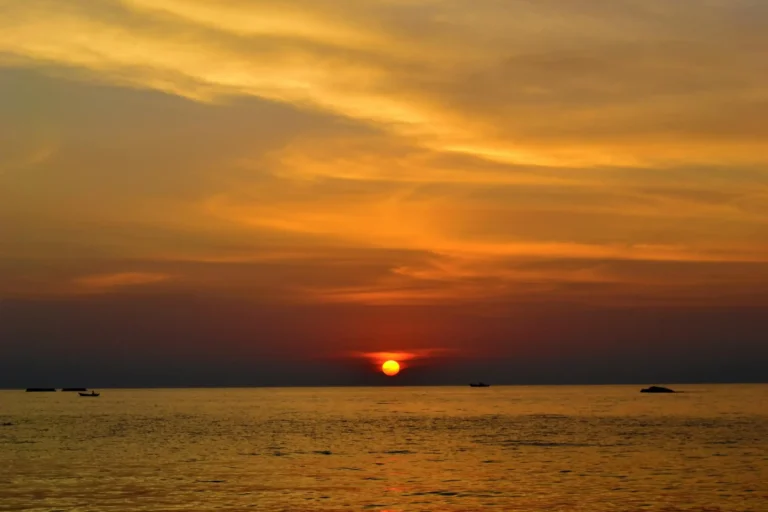An architectural marvel of eastern India and a symbol of India’s heritage, Konark Sun temple is situated at a village located at a distance of 66 km from Bhubaneswar and 35 kilometres from Puri. This Sun Temple marks the highest point of achievement in the Temple construction of the Kalinga order in Orissa.
It is a massive temple dedicated to the sun god the word Konark is a combination of two words “kona” and “arka” where “kona” means corner and “Arka” means sun so when combined it becomes the sun of the corner. There are three images of the sun god on three different sides of the temple positioned in the proper direction to catch the rays of the sun in the morning, noon and evening. Great poet Rabindranath wrote of Konark where the language of stone surpasses the language of men.
Table of Contents
ToggleHistory Of Konark Sun Temple:
The sun temple of Konark was built in the middle of the 13th century and is a massive conception of artistic magnificence and engineering dexterity. King Narasimha Deva, the great ruler of the Ganga dynasty, built this temple with the help of 1200 artisans within a period of 12 years. It is directly and materially linked to Brahman beliefs and forms an invaluable Link in the history of the diffusion of the cult of Surya which originated in Kashmir during the 8th century.
Since the ruler used to worship the sun the temple was considered as a chariot for the sun god Konark. The temple was designed in the form of a gorgeously decorated chariot mounted on 24 wheels each about 10 feet in diameter and drawn by seven mighty horses seven days a week are said to be the representation of seven horses the wheels of the chariot have an interesting fact behind their formation each wheel has a set of eight spokes and these spokes-serves as sundials. The shadows made by these sundials give the exact time of the day.
At the entrance, one can see two huge lions that appear to be guarding the temple. To reach the main shrine a flight of steps is required to be taken, on climbing the stairs two life-size statues of horses are visible on both sides inside the temple walls imprinted with intricate carvings, sculptures and bass leaves that can enthral the aesthetic sense of any beholder. The main sanctum represents the regal stride of the lord Surya, the actual idol of the sun god was removed from here and had been positioned in the Jagannath temple despite the decay over the centuries. The beauty of this monument is still amazing.
Konark Sun Temple
UNESCO declared the sun temple of Konark a World Heritage site in 1984. The Konan dance festival organized here every year is a great attraction for tourists.
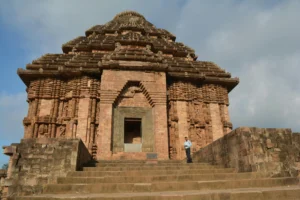
Interesting Facts about Konark Sun temple:
Construction: The construction of this Temple started in the 13th Century with the help of 1200 workers. This Temple was made by Raja Narasimha Deva Ji of the Ganga Empire. The construction of this Temple lasted from 1238-64. It is believed that around 1200 labourers were used for its construction. Another unique thing about this Temple is that people back then used to consider it as nothing less than magic. Bisu Maharana was the chief architect who constructed this Temple in 12 years.
Magnetic Gumbad(Peak or Tomb) : The Gumbad(peak or tomb) of the temple was made using a magnet. 3 tons of magnet was used at the bottom and 50 tons at the top and was balanced perfectly. 5 Temples were made out of sandstone but only 1 exists till now and is known as Prarthana(prayer) Temple. The Main Temple which got damaged was around 227 Feet tall. Once the magnetic field was disturbed, this Temple fell down.
The Temple’s Layout: In this 12-acre Temple Complex, there were 5 segments. Nata mandap, Chaya Mandir, Vimana, Prarthana Mandir and Maya Mandir. Natmandir was used for cultural dance shows, The Main Temple was used for the people to pray and it has 24 wheels around the walls. 12 on the right side and 12 on the left side.
Nata mandap- where female servants of God used to dance.
Prarthana Mandir- Where Devotees used to pray. Main Temple or Vimana. Chaya and Maya are the names given to the wives of Sun God. Their Temples can be found inside this Complex.
Sun Clock: In the Hindu calendar, a month is divided into 30 days, 15 days are Skula Paksha and 15 are called Krishna Paksha. This Temple is made in accordance with the Sun Clock which means, this Temple acts as a Natural Clock. During the sunrise, you can guess the time while looking at the left side of the Temple. During Sunset, you can guess it from the right side of the Temple.
Ashtadhatu: You can find the first sun rays on the Nata mandap. As we progress throughout the day, The sunlight will travel from one temple to another. As the sun’s rays hit the idol of the Temple, you will feel as if the sunlight is coming from inside the Temple. Ashta means 8 and Pahar means a period of 3 hours. During the first pahar, i.e. during sunrise, the first sun rays reach the Ashtadhatu idol of the Temple. After the sun rays are reflected on the idol’s surface, it would feel as if the sun rays are emitting out of the idol. This was nothing short of a miracle. But unfortunately, after the Temple’s demolition, this miracle will not be able to be experienced again.
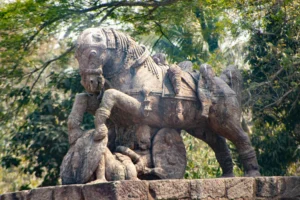
Pahar- A day has 8 Pahar( period of 3 hours). The first 4 pahar are very special to the Sun Temple. The architecture is made in such a way that during the first Pahar(6-8AM) The sunlight would reflect on the Ashtadhatu Idol. During the 2nd Pahar(9-11AM), the sunlight would touch the Sun God’s idol in the South. During the 3rd Pahar(12-2PM) The sunlight would touch the Madhya Surya Dev idol. The 4th Pahar (Ashta Surya) from 3-5PM. The sunlight would touch the Ahsta Surya idol.
The Vastu: The Vastu was made in such a way that you will find Air Ventilation(air) from the West. While looking at the Sun Temple layout, you will find 3 entrances. The main entrance is from the East side, the other 2 entrances are from the South and North Side. The layout is made with the help of Vastu, On the southeast side you will find a kitchen and a waterbody. The south gate is called Ashok Gate also known as the Gate of Knowledge. The North Gate is called Elephant Gate or Treasury Gate. You will find a well near the Northgate too. The layout was made considering the Vastu Shastra which is still followed in India.
Dwarpal : In every Hindu temple, you will find an entry gate guard or Dwarpal. In Lord Shiva Temple you will find Nandi the bull as the Dwarpal. If you visit any Goddesses Temple you will find Elephant or Lion as Dwarpal. When it comes to Sun God or Suryadev you will see 3 idols Dwarpal, Man, Elephant, and a Lion. Also, it was made by Raja Narasimha Dev, if you break his name it comes to 3 parts: Man, Lion and an Elephant.
Sanskar and Sanskriti: The labourers made this Temple around 800 years ago and you know that nothing lasts forever. Still, the idols and the carvings on the Temple portray different stories to us and are still visible to date. Our Morals like wishing Namaste to our guests, are portrayed on this wall, and You can see the idols dancing, in various art forms like Kucchipudi, Bharatnatyam, Odissi Dance, etc. were portrayed perfectly by the labourers. These Morals and Culture make us special among all the other countries. You will find various idols and carvings on the walls of this Temple. Constructing such masterpieces 800 years ago must be a great achievement in itself.
Shringar: Shringar means make-up, these idols have very well depicted how to apply makeup for married women while keeping respect for their husbands in mind. While exploring different idols of the Sun Temple, you will come across an idol of a woman applying makeup. Idols were used to spread knowledge and awareness back then. For women, it taught them how to do makeup and dress up perfectly. Not only this, it taught women how to cook and do other household work too. These all can be found in these idols.
The kitchen: As we know this Temple was built under the rule of Raja Narasimha Dev. The labourers had kept Vastu Shastra in mind. Air from the West, Knowledge from the South, Treasure in the North and Water in the East. The southeast direction was therefore used to make the Kitchen. This kitchen was dedicated to God. The labourers used to offer food and prayer to God and then only they would have their food. In the Southeast part of the Temple, you will find that in the Ancient Kitchen Food(Bhog) for the deity was prepared back then. You can see the ancient grinding stone, stove, and washing sink. You will also see a well near the kitchen which was the source of Drinking water.
Nata Mandap : The height of this Nata Mandap was 90 ft. Now it is just 35 ft and you can see
the structure deteriorating. The ASI Department is looking after this Temple. The Nata Mandap is the first building that you will come across in this Temple. It is the exact place where devotees used to perform dance for God.
Horse Chariot: The 24 wheels on this chariot are used to depict 24 hours of the day. The 3 gates acted as a passage of sunlight towards the idol. The Sun Temple looks in the form of a Chariot. You can spot the 7 horses of the Chariot. These 7 horses depict the 7 horses from the Chariot of the Sun God. These 7 horses are pulling a chariot which has 24 wheels and an idol of Sun God. There are 12 wheels on the right side and 12 on the left side. The Sun Temple is damaged from many sides, so you can not spot all 7 horses today.
Saarthi: A Saarthi means a driver. Saarthi of this chariot can be found in Jagannath Puri. This chariot is called Digvijay, which consists of 7 Horses and 24 Wheels. As you can see Saarthi is not present here today. Aruna Stambh was the Sarthi which was later shifted to Puri. As this Temple was depicted in the form of a chariot there should be a driver(Saarthi) too. Garuda was considered to be the Saarthi of this chariot whose pole was installed in this Temple. You can see the exact pole, Aruna Stambh in the entry of Jagannath Puri.
The Sun Clock: You have to put your finger in this slot to use the sundial. Apparently, the sundial looks vice-versa to a normal clock. The right hands are 1,2,3 and 4 This clock has 16 hands, and each hand represents 45 minutes. There are 60 dots which represent minutes. All the 24 wheels on the Sun Temple’s Chariots are made like a Natural Clock. If you put a scale on the wheel, you will see its shadow on different segments of the clock. The accuracy of this clock is up to perfect. Although the dials are anticlockwise compared to a normal clock.
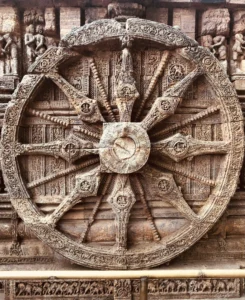
Jeevan Chakra: You can see the life of a person beautifully carved on this wheel. You can see the idol waking up in the morning, then going for a hunt on the horse, you can see him bringing him the meat after hunting. From Morning to Night, the life of a man is depicted on this wheel. In the Sun Temple, In the wheels, you will find different carvings, one of them is Jeevan Chakra Jeevan Chakra means life cycle. A man’s 8 Pahar are depicted on this wheel. You wake up, freshen up, and go hunting, while coming back the females wait for you at home, and then you go to sleep. This life cycle is clearly depicted on the wheel.
Ashok Dwar: You can see a Horse on the Ashok Dwar, A Horse is a symbol of Knowledge. In the Odisha Postal Stamp, you will see the same symbol. On the south of the Temple, you will find a gate named Ashok Dwar.
Iron Lock System: Stones were being carved with hand and were cut into smaller pieces. They were attached together with the help of iron clips. Cement wasn’t invented back then, even cranes were not available. 800 years ago creating this marvel was next to impossible. To join these stones, limestone, jaggery and sand were used.
Art of Konark Sun temple:
Modern Art: You can see the idols wearing handbags, sandals, and applying makeup. You can also see the carvings of birds used as a postal service. You can also see the idols using Umbrella as well. You can also see the carvings of idols using the couch. You will see various idols across the Temple. In the 13th Century, these idols were using modern makeup materials. High heels, hairstyles, handbags, makeup, and lipsticks. Even you see an idol depicting a fight between 2 women. It means back then people knew about the Modern world.
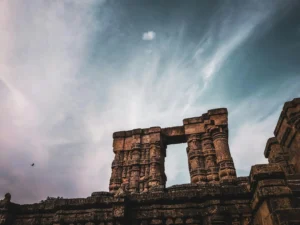
Samudra Manthan The Hindu Mythology episode of Samudra Manthan is pretty well depicted on the walls. You can also see earthing being done to prevent it from thunder and lightning. You can see the episode of Samudra Manthan carved on the walls. Gods and Demons together churned the ocean of milk. It is very well carved on the walls of the Temple.
Brides were carried in Palanquin earlier, it is clearly shown on the wall. There’s an episode of God Narasimha to save Prahlad. This art was captured on the INR 20 Note. Now it is on INR 10 Note. You can see different expressions and feelings portrayed by the idols. Then there’s a story of 5 brothers showcased on the wall. You can see different art in Konark Sun Temple. Some of the examples are: Palanquin for a bride, Lord Narsimha saving Prahlad, etc.
I hope you have enjoyed reading about the Konark Temple, its history, its legacy, interesting facts, art and culture. This temple is the epitome of the marvellous architectural history of India.

